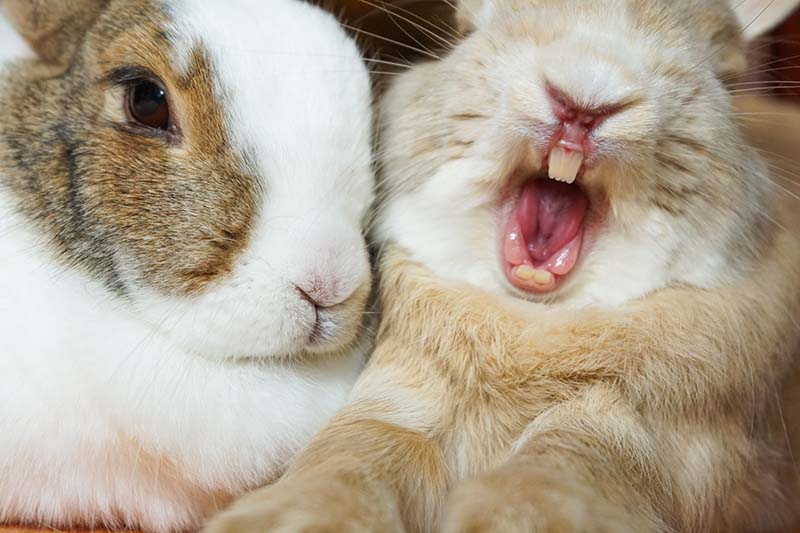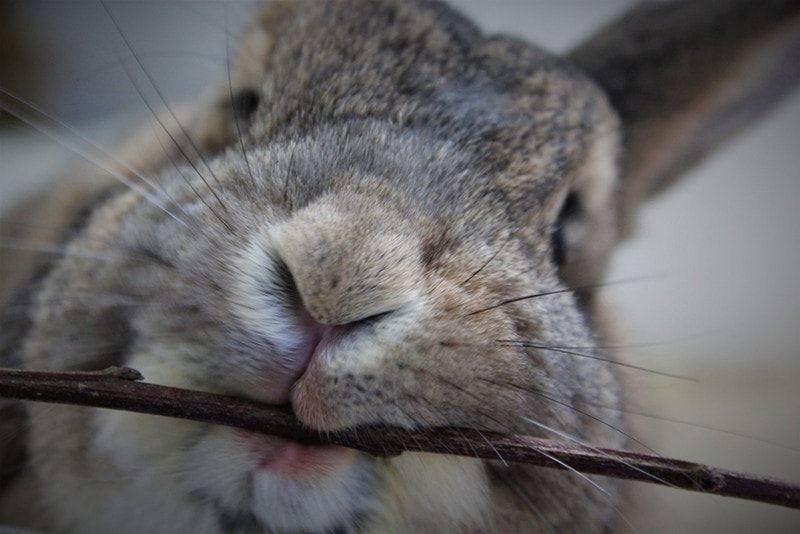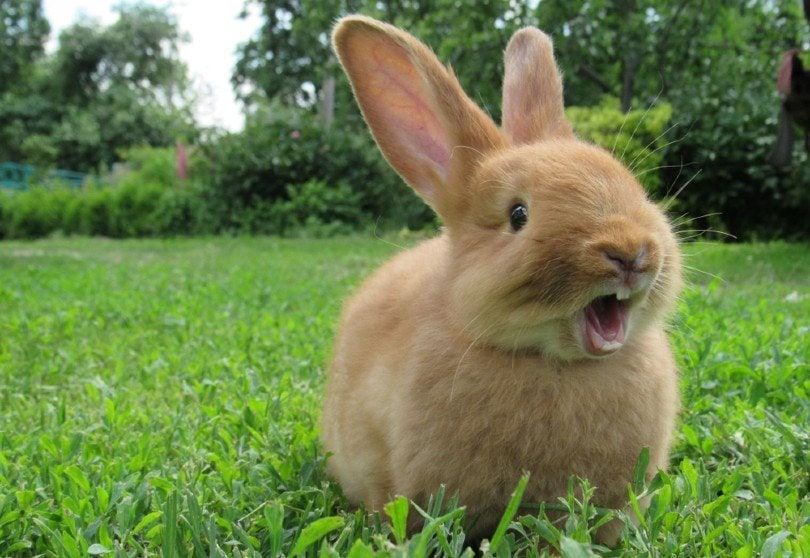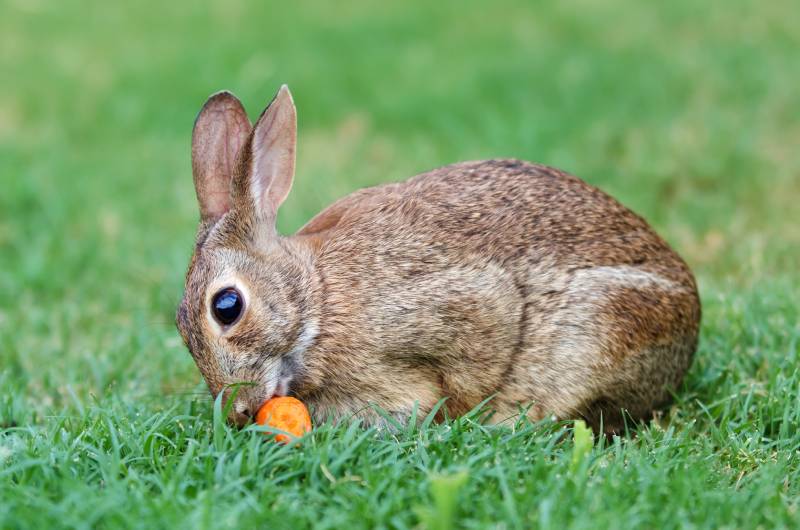Whether you have a pet rabbit or just observe one in your garden, one of the most fascinating parts of a rabbit is their teeth. At first glance, rabbit teeth aren’t all that different from human teeth and in many ways they may seem the same.
But while rabbit teeth are similar to human teeth in many ways, they are quite different in others. The more we learn, the more fascinating rabbit teeth become. With that in mind, here are 10 of the most surprising and interesting facts about rabbit teeth.

10 facts about rabbit teeth
1. Growth continues
You need to feed your rabbit lots of grass and hay, not just because they need a lot of food, but because their teeth will overgrow if you don’t. Rabbits need constant grass and hay to safely and efficiently digest their food, with most of the fiber they can’t digest, but keeping their teeth healthy is also a big part of it.

2. Rabbits have 28 teeth
Although cartoons only show rabbits’ front teeth, rabbits have many teeth in their mouths. Rabbits have incisors, premolars, and molars that help them tear and chew their food. A rabbit’s front teeth are fairly sharp and help them to bite and break food, but the food they tear is then broken down into smaller pieces by the teeth in their cheeks so that it can be swallowed safely.
3. Rabbits need fiber to wear down their teeth
Rabbits need a food that contains a lot of fibre. Not only is this fibre necessary for a rabbit’s digestive health, it is also an important factor in wearing down a rabbit’s teeth. The fibre part of a rabbit’s diet is very effective at wearing down the teeth and is necessary to keep your rabbit’s teeth from growing too long.
Four. Rabbits’ teeth can break
Rabbits’ teeth are not prone to breaking; in fact, they can break simply by biting hard foods the wrong way or fighting with other rabbits. Teeth that are already damaged or unhealthy are more likely to break.
Tooth fractures in rabbits can range from accidental to very serious and, if they affect the pulp, can lead to infection and death of the tooth. In any case, your rabbit should be examined by a veterinary dentist as some teeth may need to be extracted and appropriate treatment may be required.

Five. Rabbits’ teeth grow crooked
You might think that a rabbit’s overgrown teeth would just grow straight down, but that’s not the case. Rabbit teeth are cylindrical and have a natural curve. If a rabbit’s teeth become too long because of a malocclusion or because they do not meet up straight with the opposing teeth, they will begin to curve more and cause a variety of problems. It’s similar to how human fingernails curve when they get too long; nails never continue to grow straight. This creates sharp protrusions that can pinch the tongue, causing pain to your rabbit and making it difficult for them to eat.
6. Rabbits use their teeth just like we do.
Although rabbits have different dietary needs and unique teeth, they all use their teeth in a very simple way: their incisors at the front of their mouths tear food into pieces to make it easier to fit into their mouths, and then their premolars and molars at the sides of their mouths break the food into smaller pieces.
That’s the same way human teeth work, which means a rabbit’s mouth isn’t all that different from a human’s – or is it?
7. Rabbits have enamel on only one side of their upper incisors
A very unique, interesting and important thing about rabbits’ upper incisors is that they only have enamel on one side of the incisors. Enamel is hard and helps protect the teeth, but rabbits need to keep their front teeth sharp and slightly filed down at all times to keep them from overgrowing.
That’s why dogs’ incisors only have enamel on the outside, which protects them from external factors but also keeps them sharp and subject to wear when chewing.

8. You don’t need to brush your rabbit’s teeth
One advantage of grinding down a little each day is that there’s no reason to brush their teeth – plus, most rabbits won’t tolerate having their teeth brushed – brushing keeps their teeth from rotting, but rabbits’ teeth are constantly growing, so any one piece stays in their mouth for too long to cause problems.
So next time you see pet toothpaste in the pet care aisle, leave it there – your rabbit doesn’t need it!
9. Don’t neglect your rabbit’s teeth
Just because you don’t need to brush their teeth doesn’t mean you can neglect their oral hygiene – you need to make sure your rabbit’s teeth are sharp, healthy and of the right length, or they’ll be in big trouble.
If you suspect your rabbit has any kind of dental problem, you should take them to the vet immediately to have it addressed. Rabbits, like us humans, do not like to have pain in their mouths, and as they are particularly sensitive to pain, it is your responsibility as an owner to ensure that your rabbit’s mouth is not in pain on a daily basis. If you do not, your rabbit will not be able to eat comfortably and will suffer from digestive problems. This can lead to another serious disease called intestinal stasis, which can be life-threatening if not treated immediately.
Ten. Rabbits chew very quickly
If you’ve ever carefully watched a rabbit eat, you’ve seen them chewing like crazy. This is no optical illusion: rabbits can move their jaws up to 120 times per minute. This means that their mouths move in circles, side to side and back and forth, twice per second.
These movements allow your cat to break down its food into very small pieces and wear down its teeth, which is necessary for your cat’s long-term health.


Conclusion
While rabbit teeth look and function similarly to human teeth in many ways, rabbits have some unique characteristics that help them live happy, healthy lives both in the wild and at home. Now that you know a little more about rabbits, you can be a little more careful about caring for them if you have a pet rabbit, or a little more grateful if you’re always seeing your rabbit nibbling on things in your yard.
Featured image credit: Roselynne, Shutterstock




